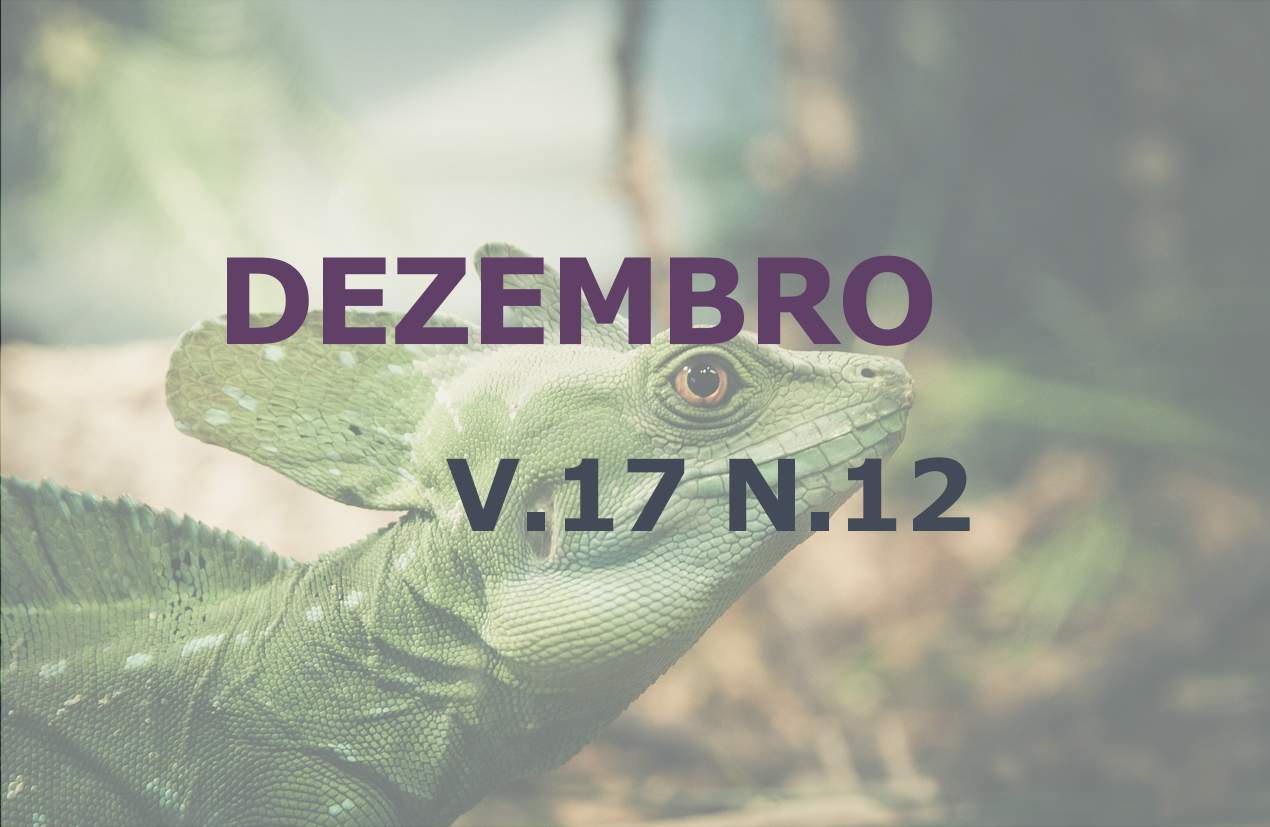Hypercortisolism remission in a dog treated with trilostane: Case report
DOI:
https://doi.org/10.31533/pubvet.v17n12e1498Keywords:
adrenal glands, adrenocorticotropic hormone, glucocorticoids, pituitary glandAbstract
Hypercortisolism, formerly called hyperadrenocorticism, is an endocrinopathy that mainly affects middle-aged and elderly dogs. It is characterized by the exaggerated production of cortisol by the adrenal glands and can be classified as: adrenocorticotropic hormone-dependent (ACTH), when there is a correlation with the production of endogenous ACTH by the pituitary gland; ACTH-independent, in cases where the adrenal glands show alteration, or iatrogenic, by the administration of glucocorticoids. Among the available treatments, trilostane is the drug of choice, as it acts directly on the adrenal glands, blocking the synthesis of cortisol. Monitoring the patient undergoing treatment is challenging, as there is no gold standard exam, so the clinician needs to associate the ACTH stimulation exam with the improvement of laboratory changes and clinical manifestations. Thus, the present work aimed to report the case of a canine patient, with polyphagia, polyuria, compensatory polydipsia, exercise intolerance, organomegaly and dermatopathy, with a diagnosis of ACTH-dependent hypercortisolism which showed a satisfactory response to trilostane therapy, reducing both clinical manifestations and imaging and laboratory alterations.
References
Abdou, O. A., Kelany, W. M., Torad, F. A., & Yehia, S. G. (2013). Ultrasonographic, morphologic and biochemical alterations in experimentally induced steroid hepatopathy in dogs. Global Veterinaria, 11(2), 123–130. https://doi.org/10.5829/idosi.gv.2013.11.2.74120.
Almeida, G. B., Miranda, M. S., Caragelasco, D. S., & Barros, M. A. (2021). Hipercoagulabilidade secundária ao hiperadrenocorticismo em cães: Revisão. PUBVET, 15(10), 1–16. https://doi.org/10.31533/pubvet.v15n10a929.1-16.
Behrend, E. N. (2015). Canine hyperadrenocorticism. In E. C. Feldman, R. W. Nelso, C. E. Reusch, J. Scott-Moncrieff, & E. N. Beherend (Eds.), Canine and feline endocrinology (Vol. 4, pp. 377–451). Elsevier St. Louis, MO. https://doi.org/10.1016/B978-1-4557-4456-5.00010-9.
Benedito, G. S., Rossi, E. M., & Camargo, M. H. B. (2017). Hiperadrenocorticismo em cães-revisão de literatura. Revista de Ciência Veterinária e Saúde Pública, 4(1), 127–138. https://doi.org/10.4025/revcivet.v4i1.37156.
De Marco, V. (2015). Hiperadrenocorticismo canino. In M. Jericó, J. Andrade Neto, & M. Kogika (Eds.), Tratado de medicina interna de cães e gatos (pp. 1691–1703).
Freitas, M. R. B., Lemos, N. C. S., & Vasconcelos, T. C. (2022). Alterações hematológicas e bioquímicas em cadela com hiperadrenocorticismo e diabetes mellitus: Relato de caso. PUBVET, 16(10), 1–9. https://doi.org/10.31533/pubvet.v16n10a1236.1-9.
Herrtage, M. E., & Ramsey, I. K. (2015). Hiperadrenocorticismo em cães. In C. T. Mooney & M. E. Peterson (Eds.), Manual de Endocrinologia em Cães e Gatos (Vol. 4, pp. 254–289). Koog.
Jericó, M. M., Andrade Neto, J. P., & Kogika, M. M. (2015). Tratado de medicina interna de cães e gatos. Roca Ltda.
Leitão, N. L. B. N. (2011). Diagnóstico de hiperadrenocorticismo canino e tratamento com trilostano: estudo retrospectivo de 20 casos clínicos. Universidade Técnica de Lisboa. Faculdade de Medicina Veterinária.
Mattioni, L. M., Grzybowski, E. L., & Beck, C. (2020). Importância de exames laboratoriais complementares para auxiliar no diagnóstico de hiperadrenocorticismo canino – Relato de caso. Salão do Conhecimento, 6(6), 1–4.
Moura, F. T. B. (2015). Hiperadrenocorticismo canino: Abordagem diagnóstica e terapêutica. Universidade de Lisboa.
Nelson, R., & Couto, C. G. (2015). Medicina interna de pequenos animais (3.ed.). Elsevier Brasil.
Paula, L., Romani, A. F., Santos, G., Amaral, A., & Ataíde, W. (2018). Hiperadrenocorticismo canino: revisão de literatura. Enciclopédia Biosfera, 15(28), 595–618.
Peterson, M. E. (1984). Hyperadrenocorticism. The Veterinary Clinics of North America. Small Animal Practice, 14(4), 731–749.
Pöppl, A. G. (2009). Adrenalectomia laparoscópica no tratamento cirúrgico do hiperadrenocorticismo em cães: um desafio para a medicina veterinária. Revista Científica de Medicina Veterinária, 7, 37–43.
Reine, N. J. (2012). Medical management of pituitary-dependent hyperadrenocorticism: mitotane versus trilostane. Topics in Companion Animal Medicine, 27(1), 25–30. https://doi.org/10.1053/j.tcam.2012.06.002.
Rosa, V. M., Carniato, C. H. O., & Campanerutti, G. (2011). Hiperadrenocorticismo em cães. In Encontro Internacional de Produção Científica. CESUMAR.
Santos, L. R., Carvalho, V. M., & Ferreira, T. C. (2022). Dermatofitose em cão com hipercortisolismo: Relato de caso. PUBVET, 16(8), 1–7. https://doi.org/10.31533/pubvet.v16n08a1180.1-7.
Silva, F. C. K., Drumond, J. P., & Coelho, N. as G. D. (2022). Hiperadrenocorticismo canino: Revisão. PUBVET, 16(5), 1–7. https://doi.org/10.31533/pubvet.v16n05a1125.1-7.
Ventura, D. L., & Machado, F. L. A. (2023). Hipercortisolismo ACTH-dependente em cadela Shih-tzu: Relato de caso. PUBVET, 17(9), e1454. https://doi.org/10.31533/pubvet.v17n9e1454.
Downloads
Published
Issue
Section
License
Copyright (c) 2023 Edna Aparecida da Silva Suzuki, Nadine Bou Fares

This work is licensed under a Creative Commons Attribution 4.0 International License.
Você tem o direito de:
Compartilhar — copiar e redistribuir o material em qualquer suporte ou formato
Adaptar — remixar, transformar, e criar a partir do material para qualquer fim, mesmo que comercial.
O licenciante não pode revogar estes direitos desde que você respeite os termos da licença. De acordo com os termos seguintes:
Atribuição
— Você deve dar o crédito apropriado, prover um link para a licença e indicar se mudanças foram feitas. Você deve fazê-lo em qualquer circunstância razoável, mas de nenhuma maneira que sugira que o licenciante apoia você ou o seu uso. Sem restrições adicionais
— Você não pode aplicar termos jurídicos ou medidas de caráter tecnológico que restrinjam legalmente outros de fazerem algo que a licença permita.





